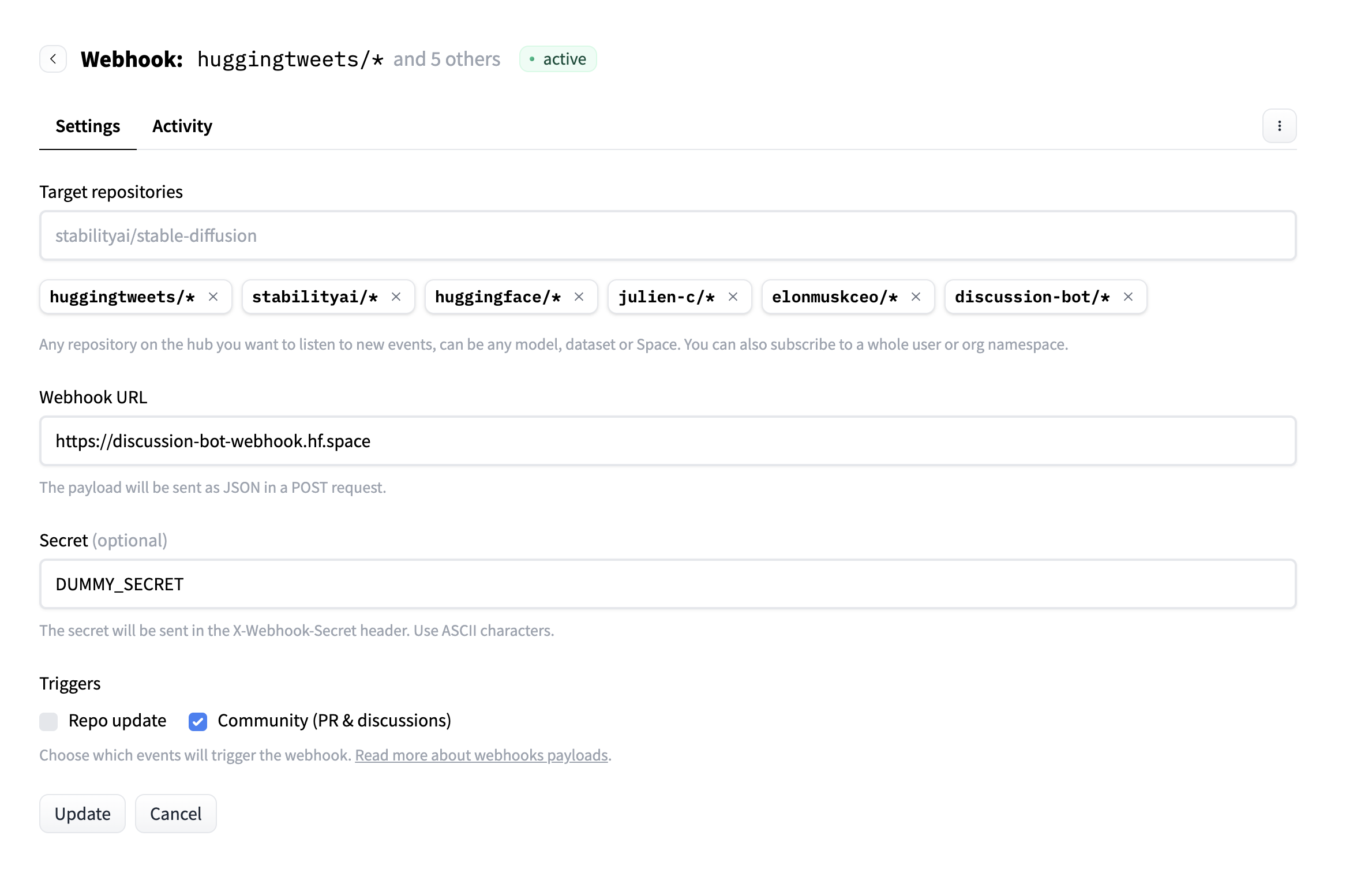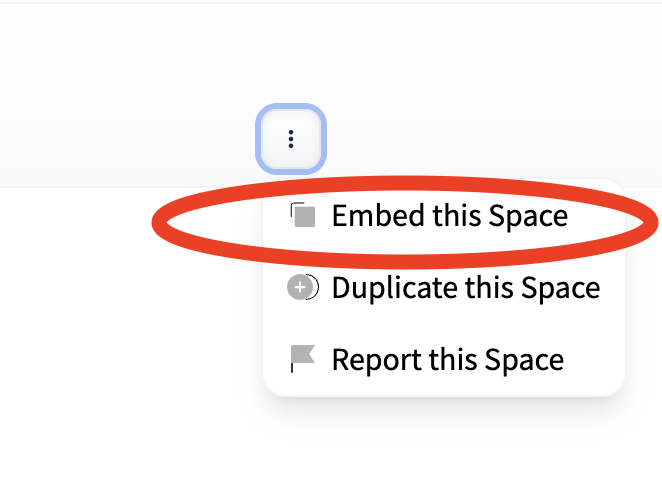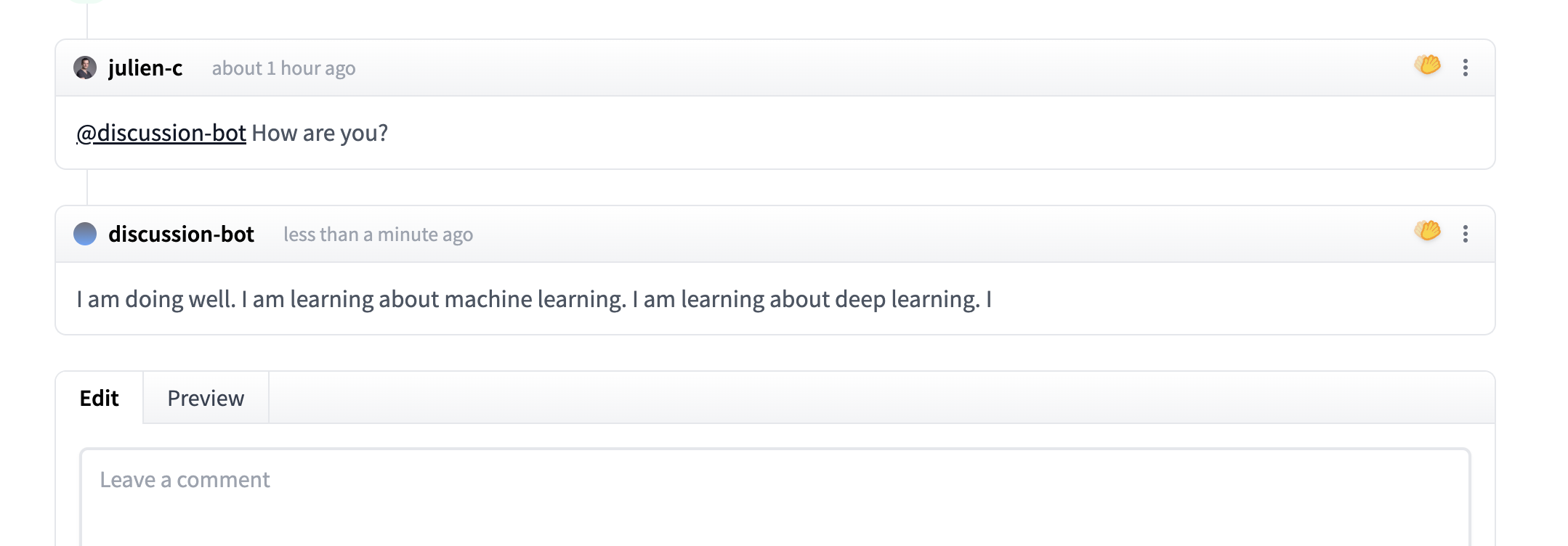Hub documentation
Webhook guide: build a Discussion bot based on BLOOM
Webhook guide: build a Discussion bot based on BLOOM
Webhooks are now publicly available!
Here’s a short guide on how to use Hugging Face Webhooks to build a bot that replies to Discussion comments on the Hub with a response generated by BLOOM, a multilingual language model, using the free Inference API.
Create your Webhook in your user profile
First, let’s create a Webhook from your settings.
- Input a few target repositories that your Webhook will listen to.
- You can put a dummy Webhook URL for now, but defining your webhook will let you look at the events that will be sent to it (and you can replay them, which will be useful for debugging).
- Input a secret as it will be more secure.
- Subscribe to Community (PR & discussions) events, as we are building a Discussion bot.
Your Webhook will look like this:

Create a new Bot user profile
In this guide, we create a separate user account to host a Space and to post comments:

When creating a bot that will interact with other users on the Hub, we ask that you clearly label the account as a “Bot” (see profile screenshot).
Create a Space that will react to your Webhook
The third step is actually to listen to the Webhook events.
An easy way is to use a Space for this. We use the user account we created, but you could do it from your main user account if you wanted to.
The Space’s code is here.
We used NodeJS and Typescript to implement it, but any language or framework would work equally well. Read more about Docker Spaces here.
The main server.ts file is here
Let’s walk through what happens in this file:
app.post("/", async (req, res) => {
if (req.header("X-Webhook-Secret") !== process.env.WEBHOOK_SECRET) {
console.error("incorrect secret");
return res.status(400).json({ error: "incorrect secret" });
}
...Here, we listen to POST requests made to /, and then we check that the X-Webhook-Secret header is equal to the secret we had previously defined (you need to also set the WEBHOOK_SECRET secret in your Space’s settings to be able to verify it).
const event = req.body.event;
if (
event.action === "create" &&
event.scope === "discussion.comment" &&
req.body.comment.content.includes(BOT_USERNAME)
) {
...The event’s payload is encoded as JSON. Here, we specify that we will run our Webhook only when:
- the event concerns a discussion comment
- the event is a creation, i.e. a new comment has been posted
- the comment’s content contains
@discussion-bot, i.e. our bot was just mentioned in a comment.
In that case, we will continue to the next step:
const INFERENCE_URL =
"https://api-inference.huggingface.co/models/bigscience/bloom";
const PROMPT = `Pretend that you are a bot that replies to discussions about machine learning, and reply to the following comment:\n`;
const response = await fetch(INFERENCE_URL, {
method: "POST",
body: JSON.stringify({ inputs: PROMPT + req.body.comment.content }),
});
if (response.ok) {
const output = await response.json();
const continuationText = output[0].generated_text.replace(
PROMPT + req.body.comment.content,
""
);
...This is the coolest part: we call the Inference API for the BLOOM model, prompting it with PROMPT, and we get the continuation text, i.e., the part generated by the model.
Finally, we will post it as a reply in the same discussion thread:
const commentUrl = req.body.discussion.url.api + "/comment";
const commentApiResponse = await fetch(commentUrl, {
method: "POST",
headers: {
Authorization: `Bearer ${process.env.HF_TOKEN}`,
"Content-Type": "application/json",
},
body: JSON.stringify({ comment: continuationText }),
});
const apiOutput = await commentApiResponse.json();Configure your Webhook to send events to your Space
Last but not least, you’ll need to configure your Webhook to send POST requests to your Space.
Let’s first grab our Space’s “direct URL” from the contextual menu. Click on “Embed this Space” and copy the “Direct URL”.


Update your webhook to send requests to that URL:

Result
